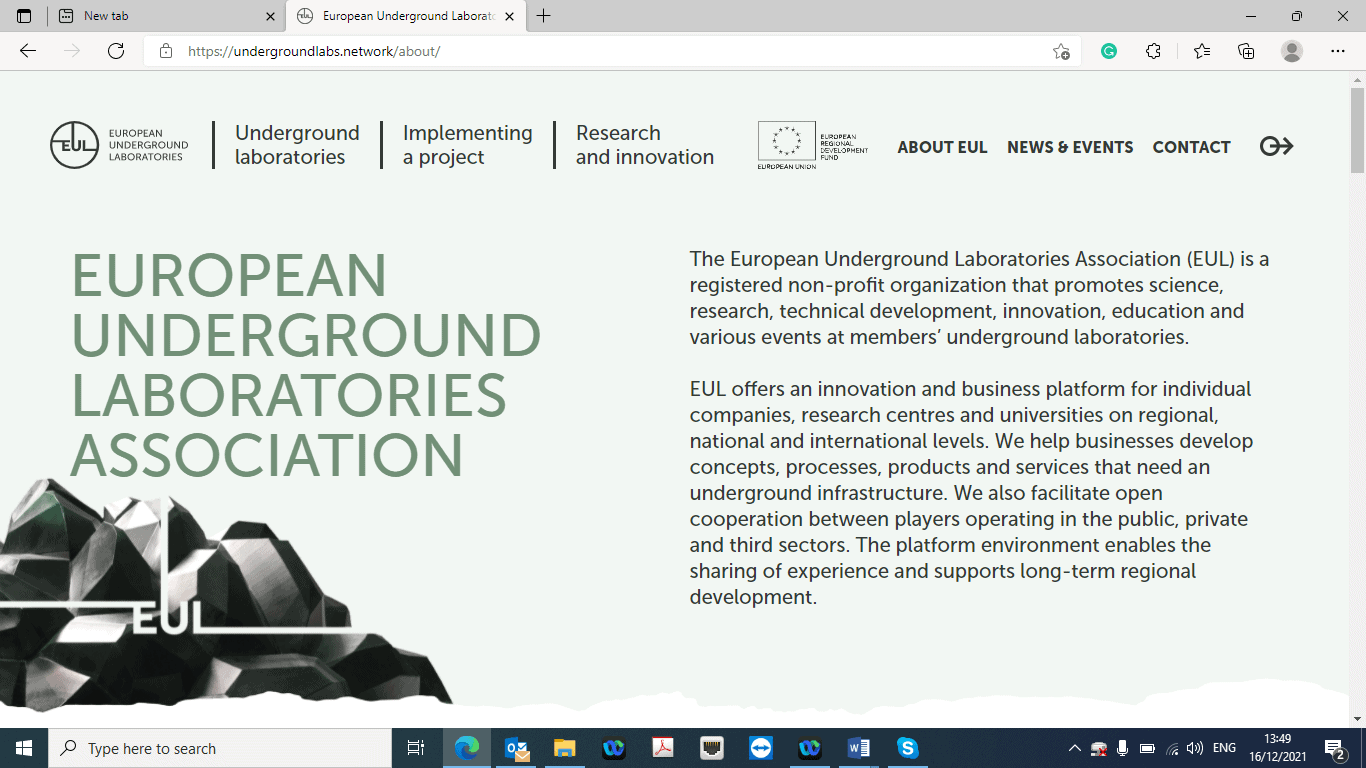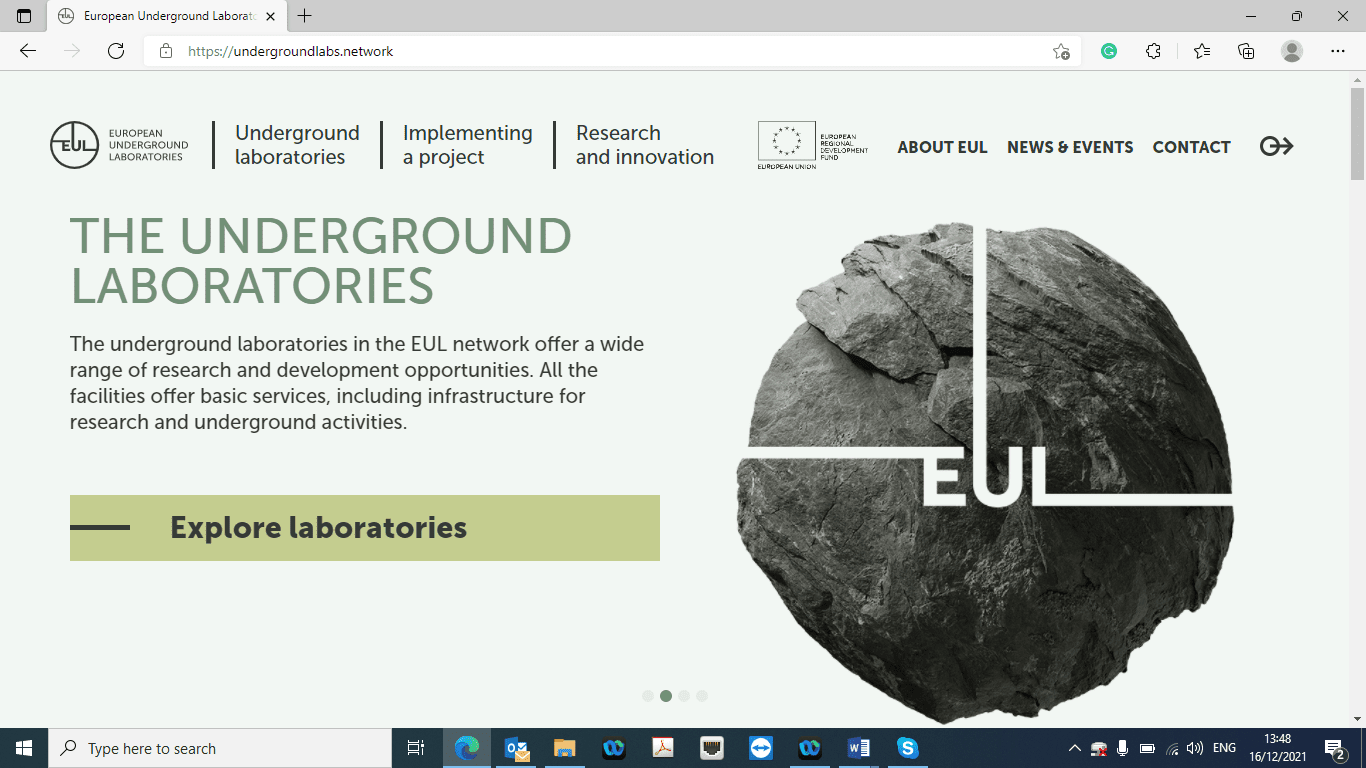BSUIN
Several underground laboratories (ULs) in the Baltic Sea region remained under-utilised for many years, without taking advantage of the innovation and business potential. Unique scientific environment of these facilities was not fully exploited. Furthermore, the laboratories were operating separately, lacking specific standards for characterizing the ULs technically or in terms of quality of operations. The existing laboratories offered services primarily on a national level and targeted mostly scientific users, as they were initiated by nearby universities to support pure scientific research. Consequently, the provision of services to commercial users was not part of their initial concept. Opening up for businesses and transnational collaboration would therefore facilitate scientific technology transfer and exchange of best practices.
Budgets
in numbers
-
3.35MillionTotal
-
2.45MillionErdf
-
0.19MillionEni + Russia
-
0.00MillionNorway
Achievements
The Unique transnational scientific environment created
The BSUIN project established a network of the Baltic Sea region’s underground laboratories, including the Callio Lab in Pyhäsalmi mine (Finland), Äspö Hard Rock laboratory (Sweden), FLB-Research and Education Mine "Reiche Zeche" (Germany), KGHM CUPRUM R&D Centre in Wrocław (Poland), Underground Low Background Laboratory of the Khlopin Radium Institute in St. Petersburg (Russia) and Ruskeala marble mine in Karelia (Russia). The laboratories provide independent researchers, research institutes, regional development agencies as well as small and medium-sized enterprises with an easy access to unique environments for business development and innovation. The laboratories allow to exploit potential for incubating innovative businesses in various fields, e.g. mining, tunnel construction, radiation shielding systems testing, and thermal energy production.
In the context of individual underground laboratories, the activities at Callio Lab (Finland) are extending into mining and tunnelling training, while the KGHM Cuprum is planning to upgrade its conceptual laboratory design. Next, the recent establishment of the GFZ Seismic 3D laboratory at the Freiberg´s Reiche Zeche mine is a proof of the right direction that BSUIN project has taken.
BSUIN project improved visibility, operation, user experiences, and safety of six cooperating underground laboratories. The project completed the characterization of the underground laboratories, developing their service concepts, improving underground environments, and engaging in outreach activities.
Open access platform established
The partnership succeeded in the development of an open-access platform that serves as a place for the laboratories to market their services and facilities as well as share relevant information. The open innovation platform hosts the information, reports guidelines, underground laboratory business models, and service designs of the BSUIN project. It also contains site characterisation information which makes it easier for the users to identify and accommodate the most appropriate facilities in view of their needs.
A new association established
The successful collaboration of the partnership resulted in the establishment of the European Underground Laboratories association (EUL). In November 2020 seven BSUIN partner organizations and two associated organizations founded the new association. It is open to individual companies, research centers and universities on regional, national and international levels.
The EUL association coordinates the open-access platform, collaborates with the BSUIN project partners, and actively seeks for new members.
Spin-off projects initiated
The BSUIN project laid grounds for the new extension phase project EUL “Empowering Underground Laboratories Network Usage” which continues joint efforts in testing, evaluating, and improving the innovation platform. In addition, BSUIN generated a spin-off project which focuses on well-being with intelligent lighting in an underground mine. This is a joint effort between architecture (UO), medicine (UO), and industrial partners from the mining and illumination industries. The next spin-off to mention is the project NEMESIS which was initiated as a Proof of Concept study on a hypothesis: Does cosmic radiation produce particle cascades in radiation shielding materials?
The Interreg project BSUIN used EUR 3 million from the European Union to increase visibility and functionality of the earlier under-exploited underground laboratories as places for transnational exchange on scientific developments as well as business ideas and incubation.
Outputs
Transnational BSUIN network installation

Open innovation platform

Project Stories
-
04.01.2018
Taking innovation underground to make it sprout
Laboratories located underground are characterised by specific geophysical, geothermal, and geological conditions, which are much different to overground laboratories.The potential of underground laboratories from the Baltic Sea region, which are often transformed from traditional mining facilities, is still left untapped, offering thriving business and employment opportunities.Read full story
Partners
University of Oulu (UO)
- TownNivala
- RegionPohjois-Pohjanmaa
- CountryFinland
- RepresentativeJari Joutsenvaara
- Phone
- E-Mail
- Web
Oulu University of Applied Sciences (OUAS)
- TownOulu
- RegionPohjois-Pohjanmaa
- CountryFinland
- RepresentativePäivi Aro
- Phone
- E-Mail
- Web
University of Silesia (USK)
- TownKatowice
- RegionKatowicki
- CountryPoland
- RepresentativeJan Kisiel
- Phone
- E-Mail
- Web
Swedish Nuclear Fuel and Waste Management Co.(SKB)
- TownSolna
- RegionStockholms län
- CountrySweden
- RepresentativeMats Ohlsson
- Phone
- E-Mail
- Web
KGHM Cuprum Research & development Centre Ltd. (CUPRUM)
- TownWrocław
- RegionWrocławski
- CountryPoland
- RepresentativeWitold Pytel
- Phone
- E-Mail
- Web
TU Bergakademie Freiberg Technical University (TUBAF)
- TownFreiberg
- RegionMittelsachsen
- CountryGermany
- RepresentativeHelmut Mischo
- Phone
- E-Mail
- Web
German Research Centre for Geosciences (GFZ)
- TownPotsdam
- RegionPotsdam, Kreisfreie Stadt
- CountryGermany
- RepresentativeRüdiger Giese, Dr.
- Phone
- E-Mail
- Web
Vilnius University (VU)
- TownVilnius
- RegionVilniaus apskritis
- CountryLithuania
- RepresentativeTaurimas Valys
- Phone
- E-Mail
- Web
National Centre for Nuclear Research (NCBJ)
- TownOtwock
- RegionWarszawski wschodni
- CountryPoland
- RepresentativeKarol Jędrzejczak
- Phone
- E-Mail
- Web
Baltic Scientific Instruments (BSI)
- TownRiga
- RegionRīga
- CountryLatvia
- RepresentativeIgors Krainukovs
- Phone
- E-Mail
- Web
Karelian Research Center of the Russian Academy of Sciences (KarRC RAS)
- TownPetrozavodsk
- RegionRepublic of Karelia
- Country
- RepresentativeIgor Shevchuk
- Phone
- E-Mail
- Web
Joint stock company "Khlopin Radium Institute" (KHLOPIN)
- TownSankt-Peterburg
- RegionCity of St. Petersburg
- Country
- RepresentativeAndrey Stepanov
- Phone
- E-Mail
- Web
Tallinn University of Technology (TTU)
- TownTallinn
- RegionPõhja-Eesti
- CountryEstonia
- RepresentativeVeiko Karu
- Phone
- E-Mail
- Web
-
Project managerEija-Riitta NiinikoskiUniversity of Oulu, Kerttu Saalasti Institute
-
Legal representativeMatti MuhosUniversity of Oulu (UO)
-
Financial managerEija KorjonenUniversity of Oulu, Kerttu Saalasti Institute
-
Communication managerEija-Riitta NiinikoskiUniversity of Oulu, Kerttu Saalasti Institute



